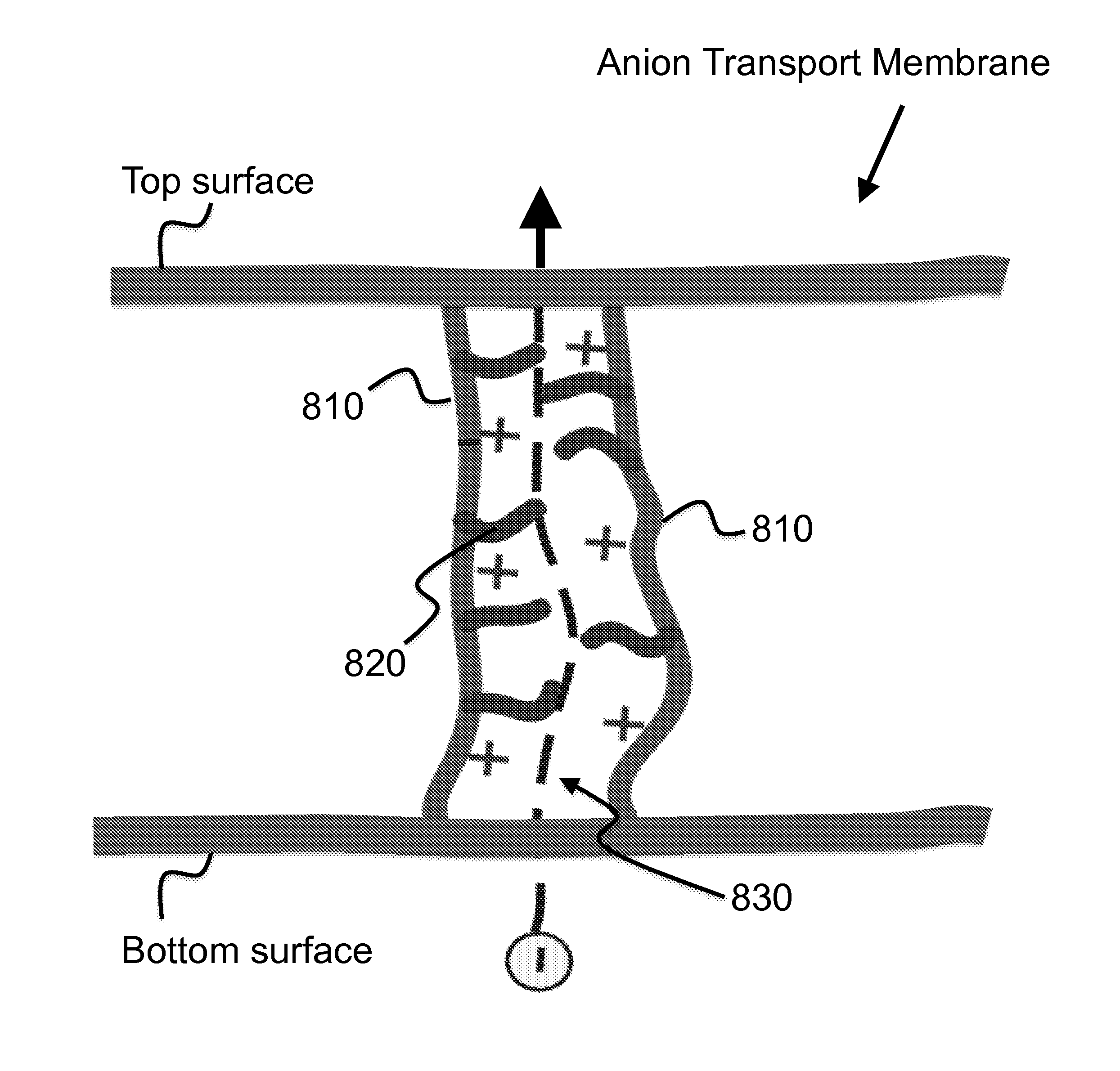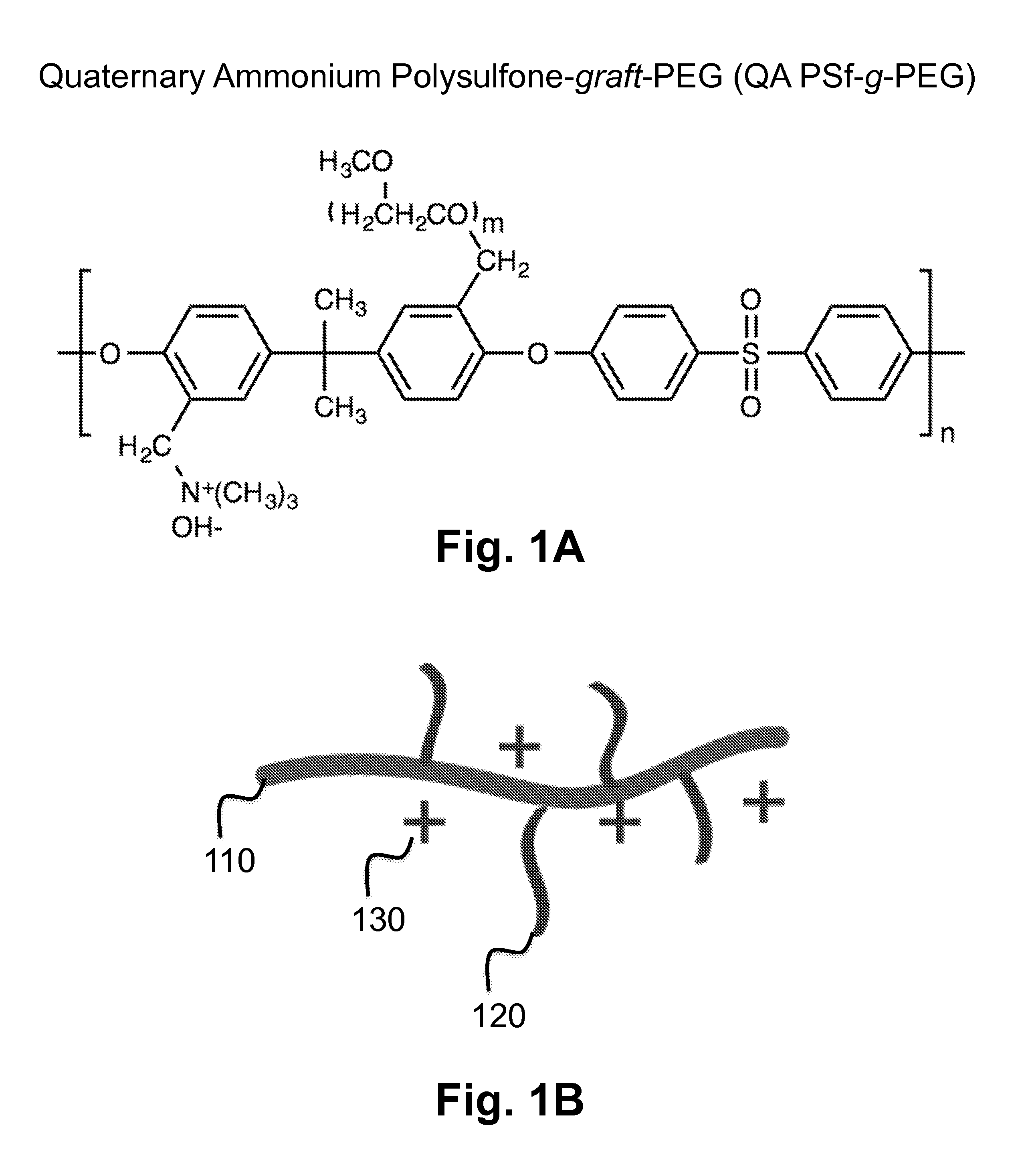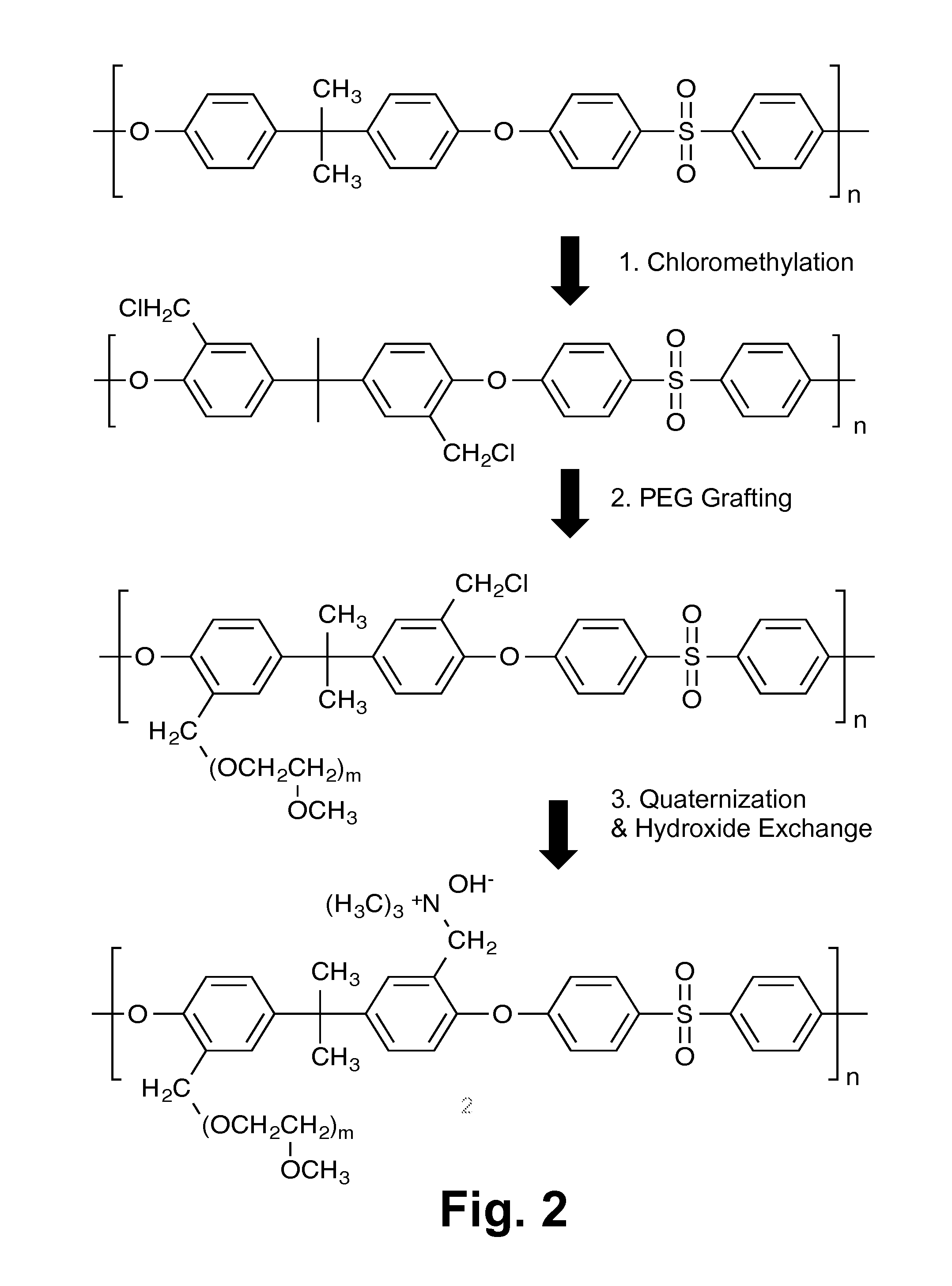Anion Transport Membrane
a technology ion transport, which is applied in the field of anion transport membrane, can solve the problems of notable decrease in in-plane conductivity, and achieve the effect of facilitating hydroxide transport and influencing the ion transport characteristics of polyelectrolyte membran
- Summary
- Abstract
- Description
- Claims
- Application Information
AI Technical Summary
Benefits of technology
Problems solved by technology
Method used
Image
Examples
Embodiment Construction
[0036]In this invention, we show that flexible, hydrophilic poly(ethylene glycol) (PEG) grafts along a typical pendant counterion-hydrophobic polyaromatic backbone ionomer can induce local phase separation and enhanced hydroxide conductivity. As an exemplary embodiment, we grafted PEG moieties along a benzyltrimethylammonium-functionalized polysulfone (QA PSf) AEM (FIGS. 1A-B). The design rationale for promoting phase separation is two-fold. First, the hydrophilic PEG graft has a repulsive x interaction parameter with the hydrophobic polysulfone backbone. Moreover, PEG's electron-rich ether groups are able to complex with cationic quaternary ammonium salts and are expected to interact favorably with the pendant benzyltrimethylammonium species along the polysulfone backbone. The culmination of these effects leads to co-localization and concentration of the quaternary ammonium groups into efficient, water-rich hydroxide transport domains, resulting in increased ionic conductivity.
[003...
PUM
| Property | Measurement | Unit |
|---|---|---|
| diameter | aaaaa | aaaaa |
| molecular weight | aaaaa | aaaaa |
| conductivity | aaaaa | aaaaa |
Abstract
Description
Claims
Application Information
 Login to View More
Login to View More - R&D
- Intellectual Property
- Life Sciences
- Materials
- Tech Scout
- Unparalleled Data Quality
- Higher Quality Content
- 60% Fewer Hallucinations
Browse by: Latest US Patents, China's latest patents, Technical Efficacy Thesaurus, Application Domain, Technology Topic, Popular Technical Reports.
© 2025 PatSnap. All rights reserved.Legal|Privacy policy|Modern Slavery Act Transparency Statement|Sitemap|About US| Contact US: help@patsnap.com



